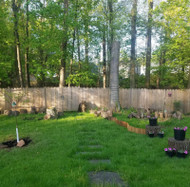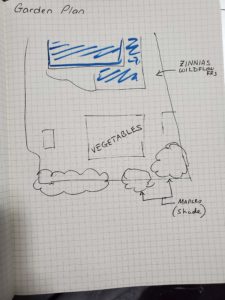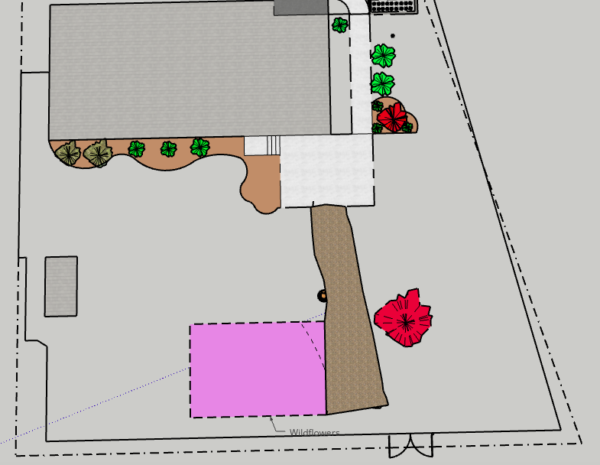
Japanese Garden Tools Vs. American: What’s the Difference?
You may have seen Japanese gardening tools popping up more in stores and online. Sure, they’re… Read More

One of my biggest temptations comes every spring. It’s the first time I go to the local nursery or garden supply store to check out their new selection. The new flowers, radiant and eye-catching are placed right out front. Daffodils and tulips are usually already in full bloom come April. But it’s the promise of the late spring-early summer flowers what’s most tempting.
Every gardener learns patince fairly early on when it comes to expenses and results. A common condition we get is called Instant Gardening Syndrome. For the first few years, buying plants is exciting: you get to see the flowers in your yard immediately or in a few weeks. But it adds up very quickly. Those first-year plants might not last for the second year, even if they were supposed to. Or you may have planted them too close to each other and now their roots are tangled with each other, causing them stress and diminished blooms the next year. Then there’s the problem with a bigger garden bed: buying enough plants to fill the space would be prohibitively expensive. It looks so easy on Pinterest, but filling that space out is the result of years of maintenance or a really, really pricey garden design installation.
To avoid repeating this cycle, every gardener needs to learn the skill of garden planning. A garden plan lists out what space is open in your yard or already taken by some hardscaping, average sunlight in different regions, soil type, and what’s already existing. You can take your list of plants of interest and compare it to the different conditions in your yard and see whether a certain plant makes sense. You can also visualize how your garden will ideally look in a few years if you are planting from seed, which will be the case for second season-bloom perennials.
A garden plan takes only a few minutes of sketching. How much detail you want to add is up to you!

To start, just sketch out a diagram with your rough thoughts. Nothing too fancy. The details come later. Use colors to indicate some key features. In the rough sketch on the left, the blue is the hardscaping parts that I will need to plan around. It can be completed on a piece of plain paper with a standard pen.
This is an important factor to consider. Azaleas can handle some sun, but they will not do well in the blistering sun during summer. They need shade. So find a place where they are protected from the sun in the afternoon, such as a tall tree or shed. Preferably a tree, though, because it can help reduce the temperature more than a harder structure would.
Know what soil can be found in your yard. Sandy soils provide poor drainage and plants may need constant watering. A plant that likes to set deep roots will have a tough time breaking through heavy clay soil. You can avoid this issue by planting another specimen that doesn’t mind clay soils, or purchase some soil amendments and till your existing clay soil with some. A personal recommendation is Coast of Maine’s Bumper Crop Soil Builder. It provides nutrients to the soil to help settle and fortify your plants’ roots. Garrett Wade’s All-Steel Penetration Shovel is made to break up tough soils such as clay and will never need replacing.
Some plants love it. Some really don’t. Make sure you find out ahead of time what areas in your yard tend to pool water or not get enough of it. It could be the difference between a plant succumbing to a disease from soggy ground, or a plant requiring daily water because the soil is too porous to hold water long enough for the plant to absorb.
This will determine the list of plants that are even feasible to grow in your yard. If you live in the southern US, then Mexican sunflowers can grow more easily than a colder region, where you are better off starting seeds a few weeks before the last frost.
After creating a rough draft, you can refine your garden plan using a wide range of tools, many of them free. We put together some tools you could use. We do not receive any affiliate payments from these links. They are purely for you to check out.

SketchUp is a tool that creates 3D models of anything from landscaping, to buildings, to interiors. It is owned by Trimble, a leading geospatial technology company, and best of all it’s free to use their online app (there are paid versions to use on desktop which some may find easier to use). There is a learning curve to modeling software, but there are plenty of tutorials and videos to guide basic questions. Once you get a hang of it, designing garden plans will be made exponentially easier with the ability to toggle layers on/off to compare different features. I used this tool to map out the work I had to do last year for my garden. The following years’ work are hidden as layers.
If you can find a satellite image of your home on Google maps, you can print out an image of it, and trace over it on some plain paper and have an accurate layout of your home each time. Note that while Google uses satellites for imagery and its street view images come from public property.
A useful tool that is often underutilized is your state’s local GIS (Geographic Information System) mapping tool. Just type in “your state + gis” and you should be able to access an interactive map of publicly available data. You can zoom in to find your property lot and print it out to have another accurate rendition of your home.
These are some paid options you could use if you want more control over your garden plan, which typically have more features than the free options mentioned above.
Photoshop: if you are less worried about geographic precision, you can use photoshop to easily add/remove/modify layers and plants. It can be used for more than just your garden plan, so consider a subscription if you also enjoy photography, design, or something which would require a tool like this.
AutoCAD: probably the most powerful tool you could use to create your garden plan. You can create very specific and precise garden designs. However, the learning curve for this software is big, so only use this if you have experience. It is also quite expensive, so it is not something that is worth purchasing if you are using it for occasional projects.
ArcGIS: the standard GIS mapping tool used in the industry. Easy to create scaled maps of your choice. The cheapest of these options, but its use is limited to just mapping
Professional Landscape Design Options: again, this may be too specialized of a tool for most people. But there are landscape design-specific tools out there to use.